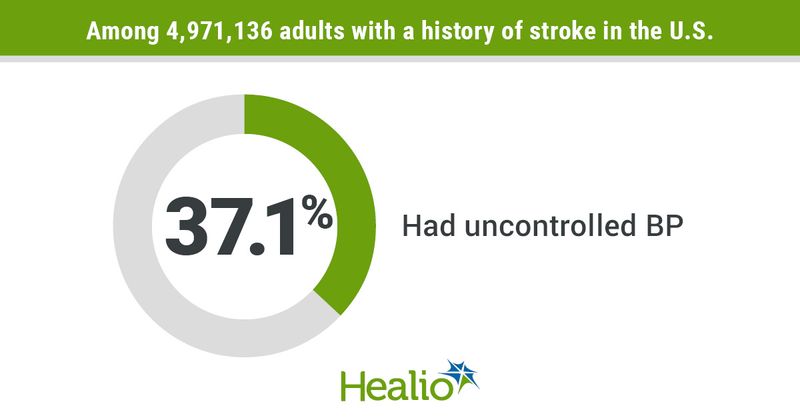Hypertension undertreated in patients with stroke history
Hypertension was significantly undertreated among individuals in the United States with a history of stroke, according to a study published in JAMA Neurology.
“Each year in the United States, more than 750,000 adults experience a stroke ... Hypertension is a major risk factor for secondary stroke and is responsible for most of the global cerebrovascular disease burden,” Daniel Santos, MD, and Mandip S. Dhamoon, MD, DrPH, both of the department of neurology at the Icahn School of Medicine at Mount Sinai, wrote. “We aimed to summarize the proportion of individuals in the United States with a history of stroke who also have hypertension, assess the extent of blood pressure control among these individuals and examine the different antihypertensive regimens used by them.”

In the cross-sectional study, the researchers identified 4,971,136 adults with a history of stroke through data from the National Health and Nutrition Examination Survey conducted between 2005 and 2016. The mean age of participants was 67.1 (95% CI, 66.1-68.1) years; 56.1% of the participants were women.
Santos and Dhamoon found that 37.1% (33.5% to 40.8%) of participants had uncontrolled BP upon examination, 80.4% (82.0% to 87.5%) of whom were on antihypertensive medication. The researchers estimated that 1 in 5 participants with hypertension did not report taking medication.
“Even among those who reported taking their prescribed antihypertensive medication, approximately one-third continued to have uncontrolled blood pressure, despite medication use,” they wrote.
The most common medications were angiotensin-converting enzyme inhibitors or angiotensin receptor blockers (59.2%; 95% CI, 54.9-63.4) and beta-blockers (43.8%; 95% CI,40.3-47.3). Over time, there was a significant reduction in the use of diuretics (P = .005; 49.4% in 2005-2006 vs. 35.7% in 2015-2016). The frequencies of other antihypertensive medication classes remained consistent.
“Although this study reveals a gap in secondary prevention of stroke, future studies are needed to determine preferential antihypertensive medication in patients after stroke,” Santos and Dhamoon concluded. “Studies focused on the efficacy of the class and number of antihypertensive medications in this patient population may be particularly beneficial.”
